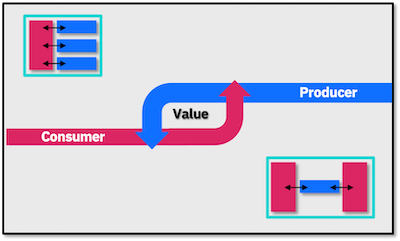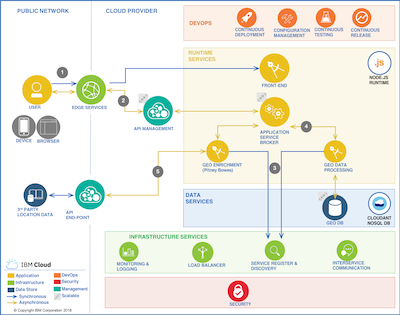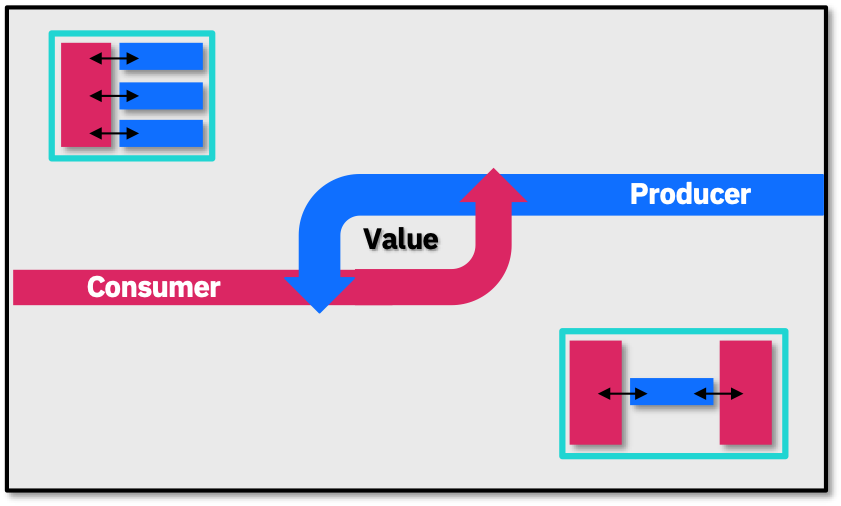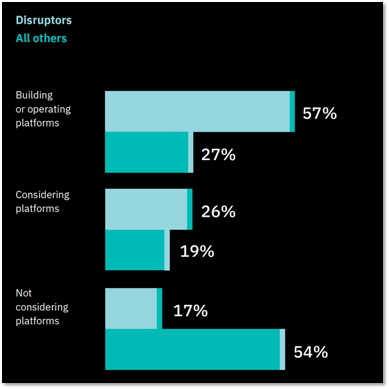Business - IT alignment has always been a challenge for enterprises – often one lagging behind the other. However, with the maturation of technology enablers such as Cloud, we are witnessing the rise of a competitive strategy that enables this by design - the Platform Business Model.
|
|
1. Disruptors are investing in Platforms
Based on the latest C-suite Study, organizations of every kind and in every industry are investing in platforms. According to a conservative estimate, ~USD 1.2 trillion in the next 2-3 years (up 174%) toward this new winner-take-most business model. By orchestrating assets instead of owning them, Platform builders expect to take advantage of network effects to scale quickly. |
2. The highest Business Model Multiplier?
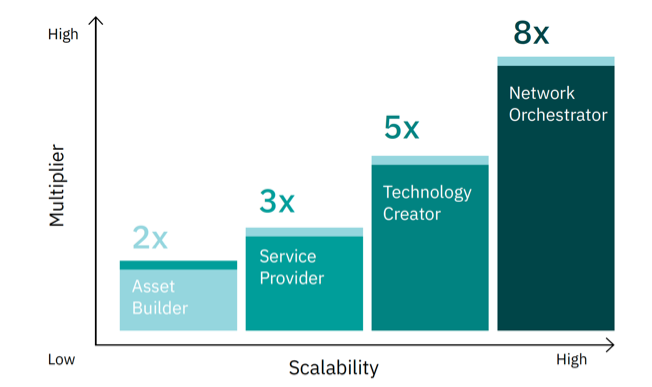
The Platform gives the operator a highly scalable and impactful business model. On average, platform orchestrators grow revenues faster and generate higher profits than other business models, earning market valuations as high as eight times revenue.
2.1 Exceeding as a Platform Operator
- Create value from reciprocity – Adopt a collaborative approach that spans an ecosystem to create win-win propositions; gone are the days of value derived from proprietary advantage (37% more Platform Operators collaborate with their competitors).
- Capitalize on data – cultivate and orchestrate data as the most important asset to improve performance and the capacity for continuous growth (18% more Platform Operators turn to data to identify customers’ unmet needs and use it to continuously innovate their products and services).
- Commit to innovation – Reallocate capital and resources from defending markets to innovating in new ones
2.2 Features of a successful Platform
The Harvard Business Review summarized the key features of a successful platform very nicely:
- Toolbox providing an easy way for participants to join the platform, co-create and collaborate by enabling interactions between them
- The Magnet creating a pull that attracts participants to the platform with a certain value it delivers for them. For example, for transaction platforms, the presence of both producers and consumers creates the necessary critical mass that attracts further adoption
- The Matchmaker fosters the flow of value by enabling connections between producers and consumers. Data is at the heart of successful matchmaking, and distinguishes platforms from other business models.
3. How is this business strategy aligned to technology perspective?
There are many possible ways to implement the key features of the platform business model from an IT perspective. However, in order to provide a straightforward alignment between Business Model and enabling IT, the implementation of the platform has to facilitate at least these 5 key capabilities:
- Multi-tenancy: enable the Producer / Consumer roles on the platform in a secure way for the multiple tenants, each with their own roles, authorizations and audit needs
- Flexibility: facilitate rapid prototyping based on a freedom of choice in tools, APIs and best-fit software defined resources. Rapid prototyping is one of seven distinguishing characteristics of Reinventors. 75% report that their culture rewards both fast failure and successful innovation, acknowledging the value they place on experimentation
- Scalability: facilitate “think big, start small” without any delays or negative financial impact when scaling-up due to success, or when scaling-down due to a change of direction
- Integration: provide the toolbox for creating value on the platform in several domains: data, applications, tools and integration to the outside world (3rd party systems). This includes the capability to orchestrate across deployments for the most optimal collaboration
- Governance: facilitate the governance of the platform by design, while keeping the balance between control and freedom to operate. In this way, stimulating the innovation of Producers on the platform, but at the same time providing the stability Consumers require
Due to its inherent characteristics, Cloud is a good match as an enabling technology for the IT implementation of the Platform Business Model. A Cloud implementation provides the option to realize each of the 5 key capabilities in one of several ways depending on the specific choices made in the business model of the platform. I am looking forward to covering these in several followup posts in the future.
